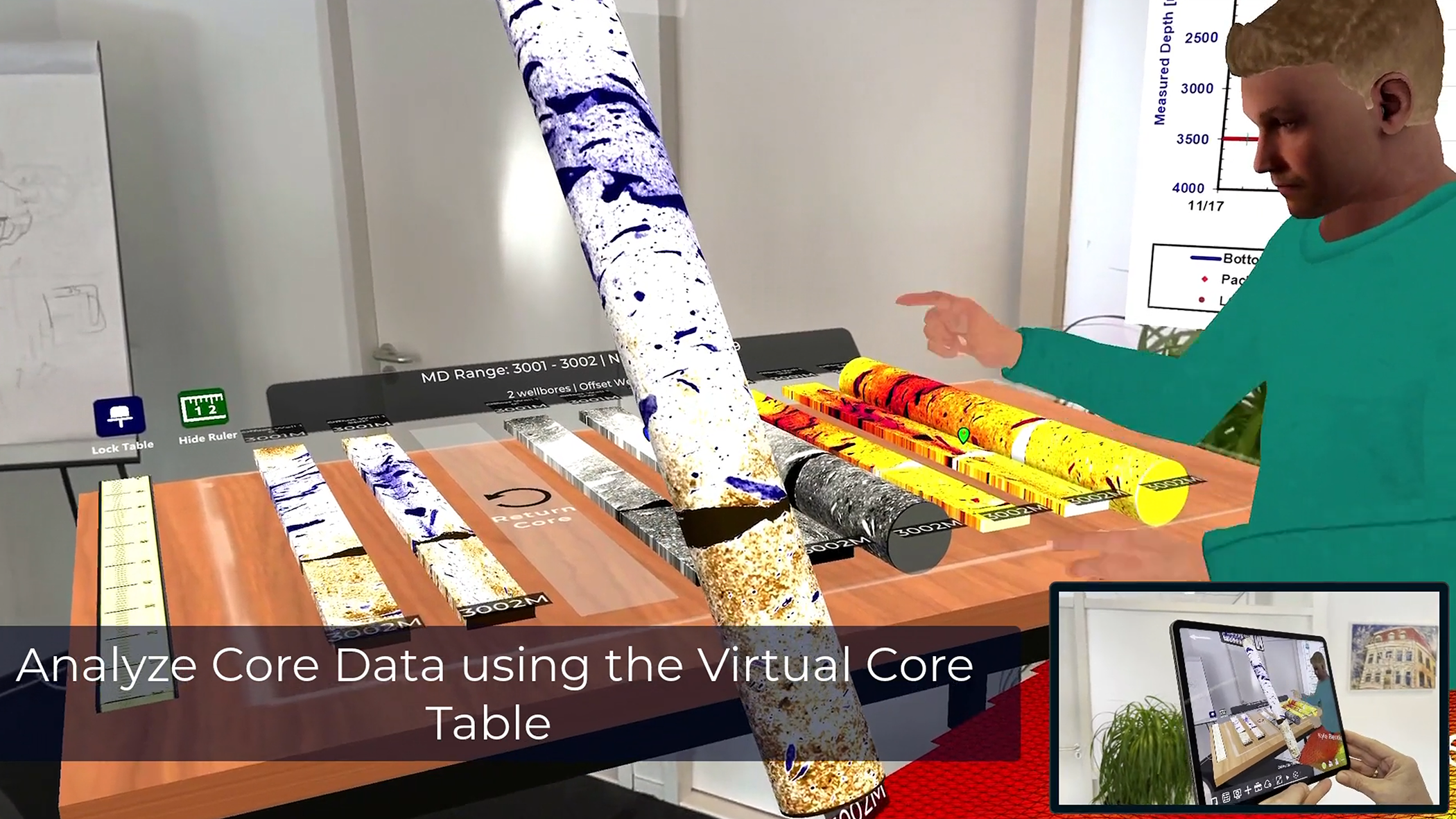Bureau Researchers Create Groundbreaking Virtual Reality Geoscience Experience

For over 20 years, the Reservoir Characterization Research Laboratory (RCRL) at the Bureau of Economic Geology of the UT Austin Jackson School of Geosciences has used three-dimensional (3D) digital outcrop models for research and education purposes. Now, the RCRL can create virtual reality (VR) environments that enable researchers and industry partners to experience a wide range of investigation scales, from individual cores to multiwell regional studies. Researchers from the RCRL have put together an ideal VR field trip consisting of integrated 3D digital outcrops, geological interpretations, digital core descriptions, 3D geocellular models, and documentary materials from RCRL outcrop and subsurface knowledge bases.
Virtual reality applications provide a unique way to more accurately and coherently communicate geologic information compared to conventional media such as PowerPoint presentations. Virtual reality field trip participants can achieve higher-quality understanding of the subsurface stratigraphic and facies architecture by directly comparing core descriptions and digital outcrop geology to subsurface models based on seismic and well interpretations. Contextualizing these critical scales in a collaborative environment helps to answer questions related to the spatial distribution of rock properties in 3D geomodels.
Using the VRGeoscience Ltd VRGS software, RCRL researchers interpreted a high-frequency cycle framework through the detailed mapping of key outcrop contacts and linking to closely spaced measured section data. The modelers used Schlumberger’s Petrel software to build an updated 3D geomodel, integrating outcrop facies section interpretations with 3D modeled seismic volumes. Using the Craytive Technologies BaselineZ software, they transferred the outcrop, core, geocellular, and seismic results to an online VR collaboration room.
The resulting Lawyer Canyon Virtual Field Trip documents the regional stratigraphic setting, scale of stratigraphic cyclicity, the internal 3D facies architecture, and petrophysical heterogeneity at interwell scale. The VR field trip room provides an ideal environment for communicating multidisciplinary, cross-domain workflows and methodologies to a wide audience, including nongeoscientists, students, and industry professionals.
To learn more about these groundbreaking VR applications, please contact Robin Dommisse.

Last Chance Canyon outcrop with (above) and without (below) grainstone geobody visualized in virtual reality.

The well-known Lawyer Canyon outcrop as seen in the self-guided virtual reality tour.

Those who take the virtual reality tour can use avatars to interact with fellow participants and move around virtual lab spaces to examine core samples, view seismic data, and more.